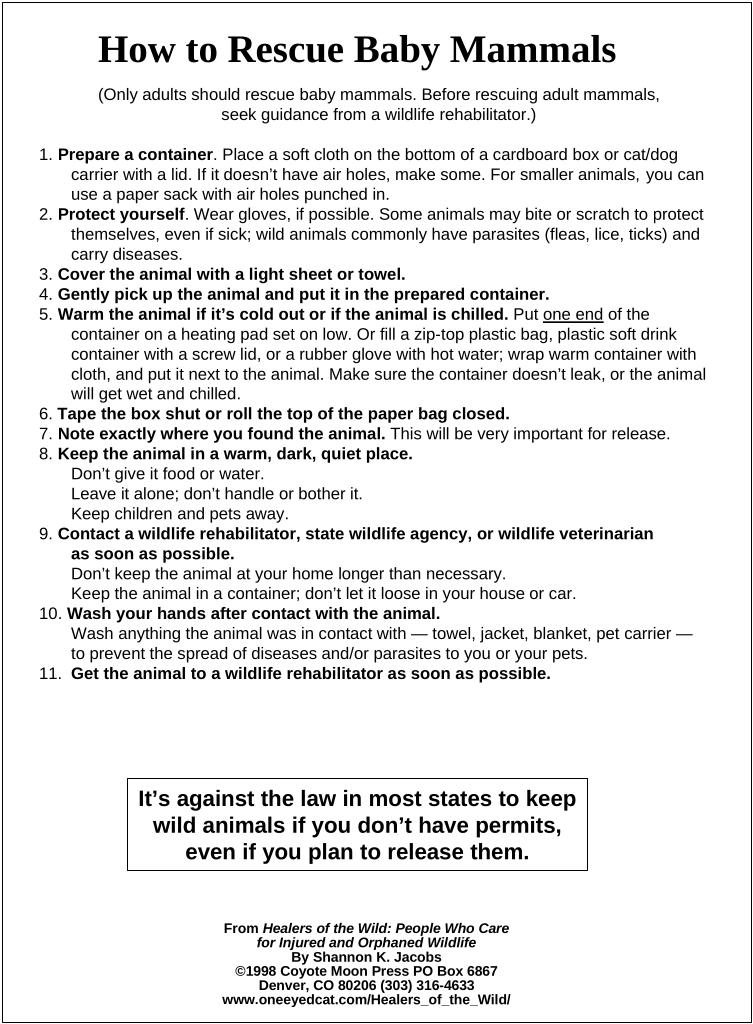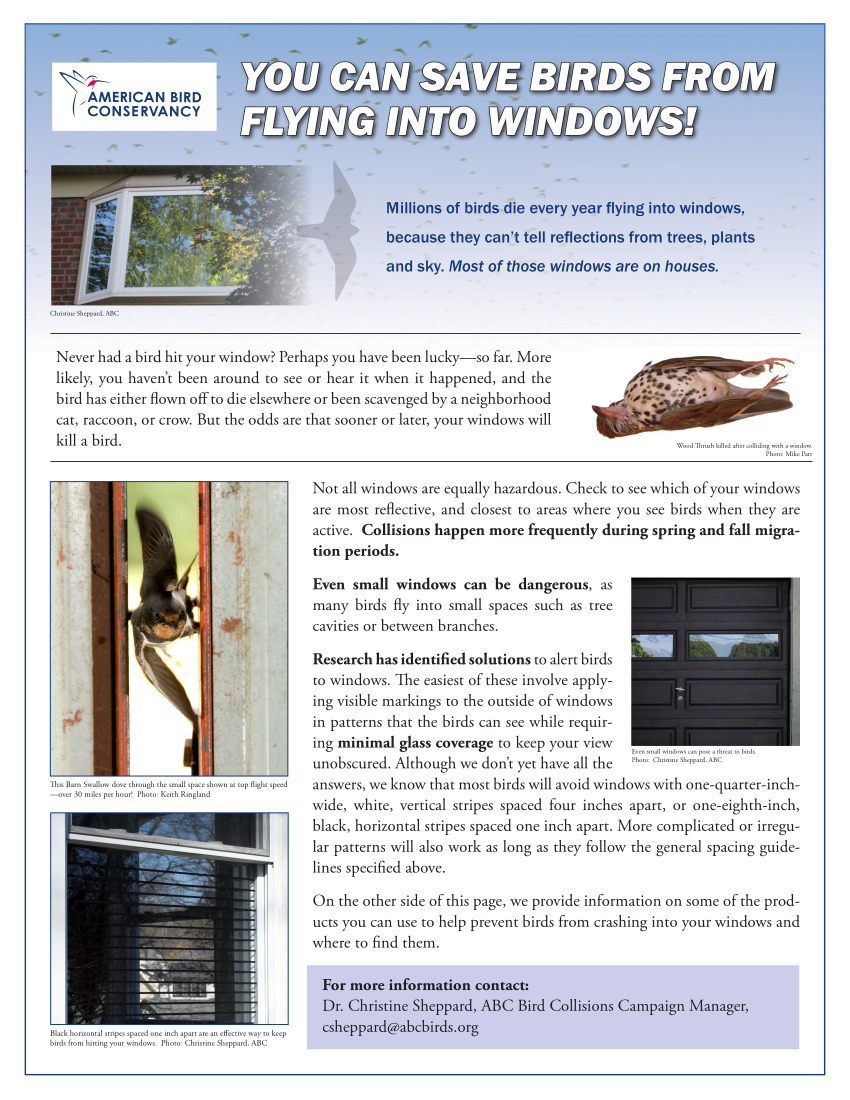Wildlife Resources



Tips for Handling Injured Raptors
1. Please do not attempt to rehabilitate a raptor on your own. Always contact a licensed professional. If you are unsure of who to notify, you can contact The Raptor Center, or appropriate agencies in your area:
- The United States Fish and Wildlife Service (USFWS)
- Your state’s Department of Natural Resources or Department of Game, Fish and Parks
- Your local sheriff’s office
2. If you must handle or move a bird, first cover the bird with a blanket or towel to reduce its visual stimulation, and protect yourself by wearing heavy gloves and safety glasses. Then, gently fold the bird’s wings into its body with your two gloved hands. Gently but firmly lift the bird into a transport container. Remember: Even a seriously injured raptor is potentially dangerous. Wild birds do not understand that we are trying to help and will defend themselves. They are quite unpredictable, and you should be especially aware of their sharp beak and talons.
3. The best way to transport a raptor is in a plastic dog or cat kennelor in a sturdy cardboard box with the top closed. Avoid bird or wire cages, as these can cause feather and soft tissue damage. The carrier should have plenty of ventilation holes and should only be slightly larger than the size of the bird. The less room an injured bird has to move around, the less likely it is to cause more injury to itself. However, on the other side, if a container is too small, a bird can sustain extensive wing and feather damage.
4. Never feed an injured raptor unless you have been instructed to do so by a licensed rehabillitator. The dietary needs of raptors are more delicately balanced than people realize. Even the juiciest steak imaginable will not provide a raptor with what it needs. In addition, most injured birds are suffering from dehydration, and attempting to feed them or give them water orally may worsen their condition. If a bird has not eaten for a while, its digestive system shuts down and it cannot handle any food. At The Raptor Center, these patients are given a special fluid therapy for a day or two to jump-start their systems before any type of food is provided.
5. Handle an injured raptor as little as possible. Stress resulting from human contact can reduce a bird’s chance of recovery.
6. Until the bird can be transferred, provide it with a dark, quiet, calm, warm environment. Darkness has a calming effect on birds. Extra care should be taken to keep the bird away from children and pets.
7. Do not keep a raptor any longer than is necessary to get it to a veterinary professional, raptor rehabillitator, or state/federal wildlife representative.


Tips for Handling Injured Raptors
1. Please do not attempt to rehabilitate a raptor on your own. Always contact a licensed professional. If you are unsure of who to notify, you can contact The Raptor Center, or appropriate agencies in your area:- The United States Fish and Wildlife Service (USFWS)
- Your state’s Department of Natural Resources or Department of Game, Fish and Parks
- Your local sheriff’s office
2. If you must handle or move a bird, first cover the bird with a blanket or towel to reduce its visual stimulation, and protect yourself by wearing heavy gloves and safety glasses. Then, gently fold the bird’s wings into its body with your two gloved hands. Gently but firmly lift the bird into a transport container. Remember: Even a seriously injured raptor is potentially dangerous. Wild birds do not understand that we are trying to help and will defend themselves. They are quite unpredictable, and you should be especially aware of their sharp beak and talons.
3. The best way to transport a raptor is in a plastic dog or cat kennelor in a sturdy cardboard box with the top closed. Avoid bird or wire cages, as these can cause feather and soft tissue damage. The carrier should have plenty of ventilation holes and should only be slightly larger than the size of the bird. The less room an injured bird has to move around, the less likely it is to cause more injury to itself. However, on the other side, if a container is too small, a bird can sustain extensive wing and feather damage.
4. Never feed an injured raptor unless you have been instructed to do so by a licensed rehabillitator. The dietary needs of raptors are more delicately balanced than people realize. Even the juiciest steak imaginable will not provide a raptor with what it needs. In addition, most injured birds are suffering from dehydration, and attempting to feed them or give them water orally may worsen their condition. If a bird has not eaten for a while, its digestive system shuts down and it cannot handle any food. At The Raptor Center, these patients are given a special fluid therapy for a day or two to jump-start their systems before any type of food is provided.
5. Handle an injured raptor as little as possible. Stress resulting from human contact can reduce a bird’s chance of recovery.
6. Until the bird can be transferred, provide it with a dark, quiet, calm, warm environment. Darkness has a calming effect on birds. Extra care should be taken to keep the bird away from children and pets.
7. Do not keep a raptor any longer than is necessary to get it to a veterinary professional, raptor rehabillitator, or state/federal wildlife representative.